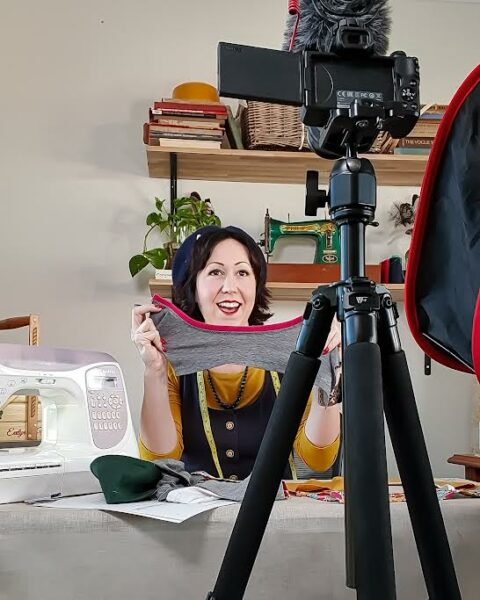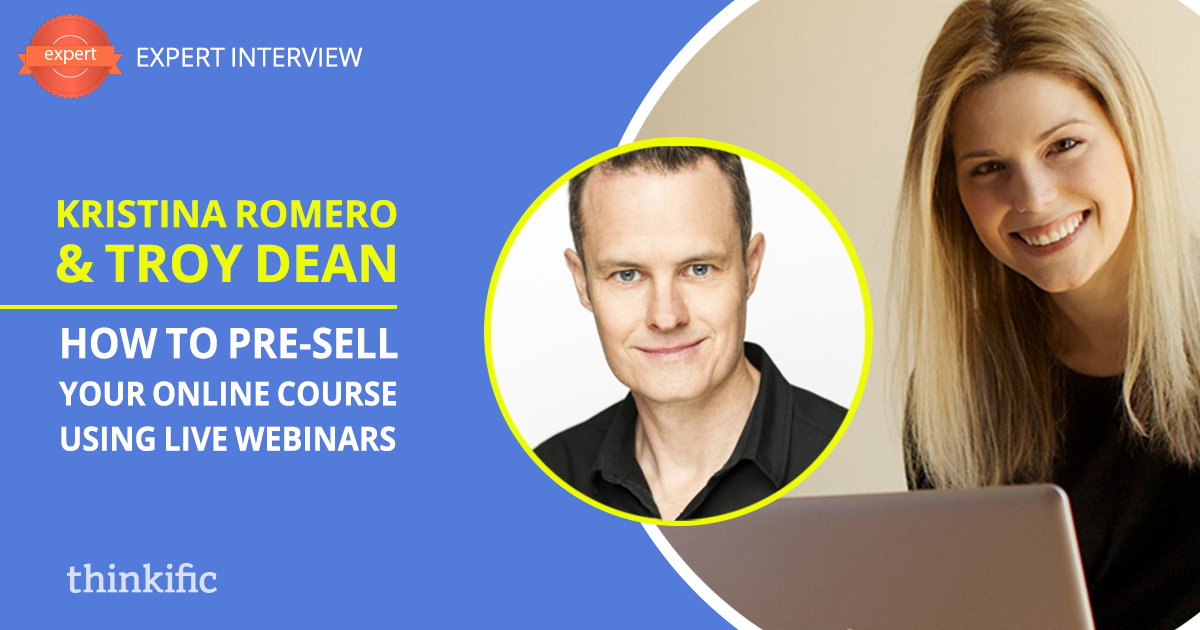Webinars are a powerful way to sell your course. They showcase your expertise, give potential learners a firsthand experience of what it would be like to learn from you, and can effectively capture new leads.
But while you may have created the perfect webinar to use as a sales pitch for your course, there’s no point in having it if no one is there to watch.
As a course creator, if you want to use webinars to sell your course, you not only need to put together a great sales webinar, you also need to learn how to effectively promote it.
In this blog, we’ll look at a few key strategies to help you get started promoting your online course with webinars. From optimizing your landing page to figuring out the right channels to capture those all-important leads, we’ve got you!
Here’s what we’ll cover:
- Optimize your webinar landing page
- Webinar promotion strategies for your existing audience
- Webinar promotion strategies for new audiences
- Make your webinar evergreen
Need help putting together your sales webinar? Start with a webinar template that has been built around a tried-and-tested sales formula. There are lots of options available online, including webinar templates just for course creators.
Optimize your webinar landing page
Before we get started with how to promote your webinar, let’s first take a look at how to optimize your webinar landing page.
It’s incredibly important that you spend some time doing this since all the traffic you generate to your webinar registration page will be wasted if you’re not hyper-focused on converting visitors once they land on it.
Getting people to register for your webinar is your #1 priority. Here’s a few ways to make sure that happens.
Make sure you write a strong headline that catches the reader’s eye. Your headline is what will get visitors intrigued and want to learn more about what you have to offer. So make sure it stands out!
Use simple language and focus on telling your visitors what they stand to gain from signing up for your webinar.
Talking about the pain points and challenges you address is equally — if not more — important than talking about the solution you teach. It lets people know you really understand the problem, brings their pain into sharp relief so they realize how much they need your solution, and lets them know that they are in the right place.

People often turn to webinars and online courses to help them solve a challenge or problem they are struggling with, so make sure you include key challenges your course addresses to help prospects clearly see how you can help!
If you’ve helped someone get amazing results or your learners have gone on to do great things after your course, make sure you advertise this!
Use numbers and statistics wherever possible to illustrate the impact of your course. This is the best way to grab attention and highlight in a concrete way what your course can do for new prospects.
Alongside hard-hitting numbers, you’ll also want to include testimonials. Numbers are great at communicating impact, but prospects will also want to know the stories behind these numbers.
Social proof is the best way of showing this! Getting others to talk about the impact of your course makes you seem more credible, while also telling a story.
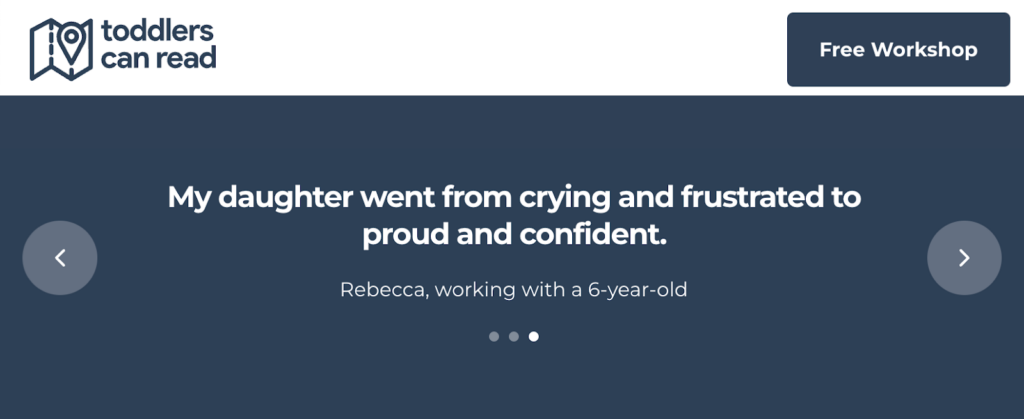
When you include the name, situation, and/or photo of every person who gives you a testimonial, it helps bolster your credibility.
While it might seem obvious, making your landing page easy to read is one of the most important things you need to remember. Once visitors land on a webpage, it only takes a couple of seconds before they decide whether to leave. Making your page as simple, easy to read and well structured as possible makes it more likely that visitors will stay!
Complex language or long paragraphs might intimidate your audience or cause them to get tired while reading. So keep it simple if you want those sign ups!
Make sure you include one strong, clear call to action to sign up for your webinar. Including multiple links or multiple asks (sign up, share on social, learn more about me, etc.) will only distract your audience and dilute your message.
Be sure to remind audiences of your CTA by including it on every scroll of the page!
Want more help creating and optimizing your webinar landing page? Check out this guide and examples.
Now that you have your landing page set up, let’s take a look at promotion strategies to drive traffic to it, which we’ve divided into two categories:
- Promotion strategies for your existing audience
- Promotion strategies new audiences
Webinar promotion strategies for your existing audience
Your existing audience are your biggest champions! Focusing on the people that already understand the value of what you offer is one of the best ways to get new qualified leads to sign up. So before you go spending all that ad money, look at ways to leverage — and engage! — your current audience.
As a primary marketing asset, your website can drive more authentic sign ups. So don’t forget to promote your webinar on it! Here are 3 key ways you can do this:
- Sticky Bar: A sticky bar is a horizontal bar that stays “stuck” to the top or bottom of a page on your website as people scroll. It is usually in a different color and highlights new events or announcements you may have, which makes it a great place to advertise your webinar! Here is an example of a sticky bar on the top of Carly Adam’s website for her business, Tidy Revival:
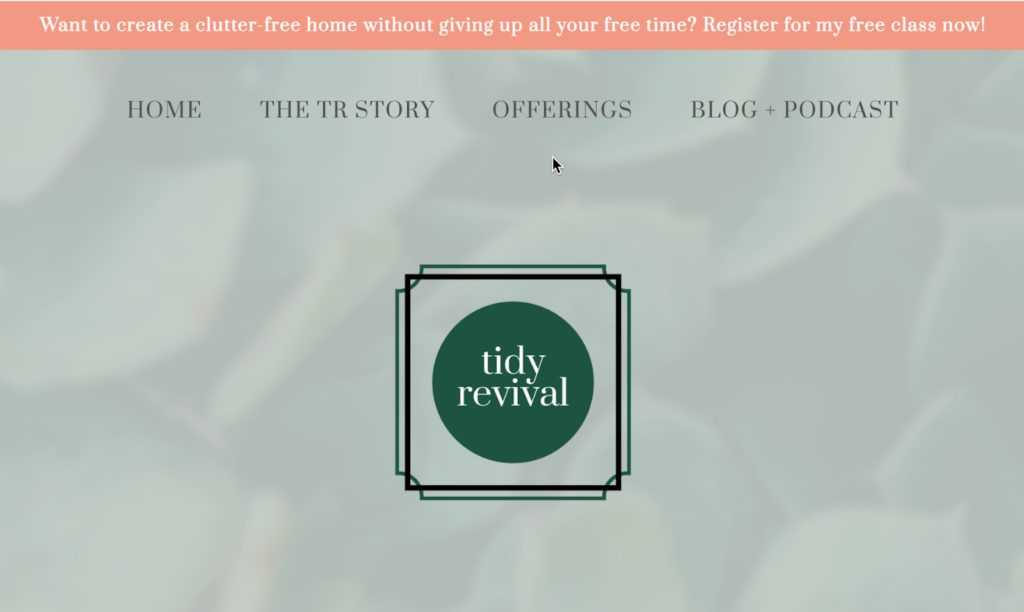
- Exit Intent Popup: An exit intent popup appears over your landing page if a visitor goes to leave the page. It’s an opportunity to stop them from leaving and ask for a conversion. Check out this exit popup that Lewis Howes uses on his website:
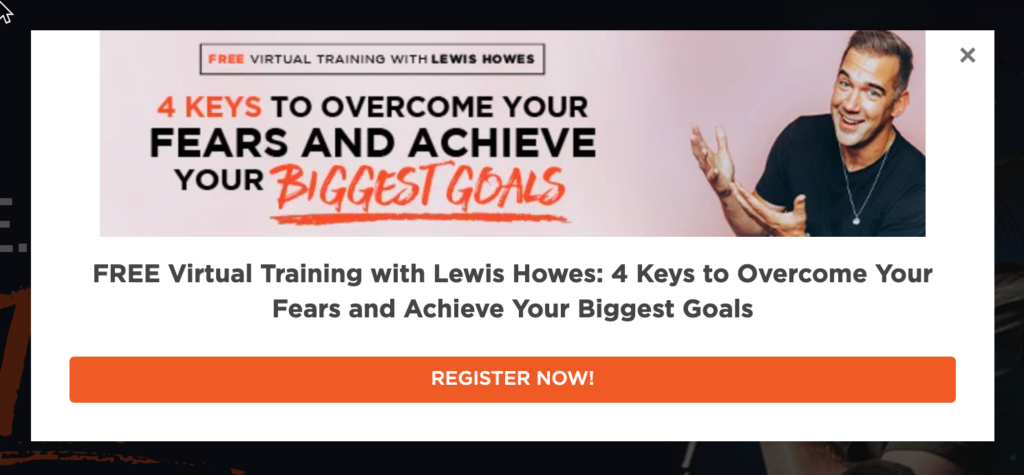
- Blog Banner: If someone’s already reading your blog, chances are they’re pretty invested. Including a banner or sidebar ad on your blog is a great way to convert those already lower down in the funnel. eWebinar, for example, offers a marketing widget specifically designed for promoting a webinar in a blog post, like this:
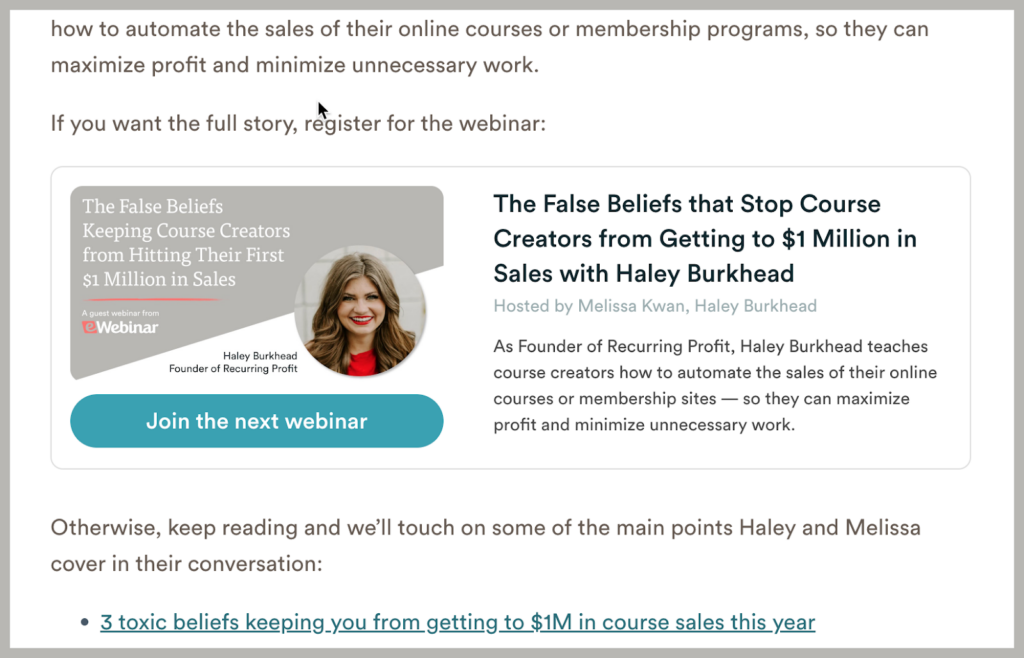
Use social media to keep your existing audience engaged by talking about topics they care about and keep the conversation going. Create a dedicated hashtag and use social media to remind your audience about your upcoming webinar. The more they are already engaged, the more likely they are to attend. Instagram stories and reels are especially effective to get the word out!
Finally, get your network of existing students, partners and team members (if you have them) to share about your webinar on social media too. This will help you broaden your reach and likely increase those signups!
Email is probably one of the most effective marketing channels for webinars. So make sure you are strategic about how and when to send them. Here are a few emails you’ll definitely want to send to your mailing list:
- Webinar invitation emails: Make sure you send out a ‘save the date’ invite to everyone on your mailing list at least 2-3 weeks in advance asking. Follow up with 1-2 reminders after this, but don’t spam users with too many invites!
- Welcome email: Once users sign up for your webinar use an autoresponder welcome email to say you have received their registration details and give them an outline of the course along with what they can expect and how they will benefit.
- Last chance email: Send a final email on the day of the webinar to remind everyone it’s their last chance to sign up. If you’re offering a discount for your course in your webinar, then be sure to advertise the fact that it’s their last chance to get this discounted price. These types of emails are a great way to boost signups.
- Follow up emails: Just because your webinar is over doesn’t mean you should stop sending emails. Keep your audience engaged by following up with key points covered in the webinar and a special offer to sign up for your course. Check out this blog for more on how to create a follow up email sequence.
Finally, send a special invitation to your former students. The most successful course creators upsell new offerings to past students. Previous attendees who have already found value in your courses are more likely to re-join. This can be a reliable source of revenue for you, so make sure you don’t forget to reach out.
Personalize this communication as much as possible as it will help with conversions!
Webinar promotion strategies for new audiences
Getting new audiences to sign up for your webinar can be a challenge. But as long as you’re strategic and consistent — and give it some time — it can really pay off!
The world of paid advertising is vast and often confusing, but here are a couple of key channels to focus on:
- Facebook and Instagram Ads: Advertising on social media is one of the best ways to reach out to audiences that might be interested in your webinar. The high degree of targeting and relatively inexpensive price tag are what make it one of the most effective ways to spread the word. Focus on Facebook as it’s one of the largest platforms and offers integration with Instagram as well. Make sure you test a few campaigns on a small scale before you spend a significant amount of money on a larger campaign. Experiment with video ads as they tend to convert better!

- Retargeting: Who better to advertise to than those who already know who you are? Retargeting helps you effectively use ad dollars on people who are already familiar with your brand and have demonstrated interest. Design an ad campaign directed at those who have already visited your site, downloaded a free ebook, commented on your blog, or engaged with you in some way. It’s easier to capture and convert warm leads and a retargeting campaign can really boost those sign ups!
If you’re hosting a webinar along with someone else — or are being sponsored in some way by another company — make sure you leverage their promotion channels as well. Ask your partners to share your webinar with their network and audience. You’ll gain free exposure to an audience that is similar to yours and get more qualified leads into your sales funnel.
Make it easier for partners to do this by providing them with images, copy, and other assets needed for social media posts and emails, which they can customize or copy/paste as is.
Don’t know how to host a partner webinar? Find out more in this blog post on the topic.
You’re now ready to get your webinar out into the world! But before you go, let’s talk about evergreen webinars.
While live webinars are great, when it comes to hosting a sales-focused webinar, it might not be the best option.
Make your webinar evergreen
Offering a free webinar to give people a taste of what you offer in your full course is a powerful way to find new students. The problem is that regularly offering the same live webinar over and over can quickly become unsustainable.
To solve this, why not convert your sales pitch into an evergreen webinar?
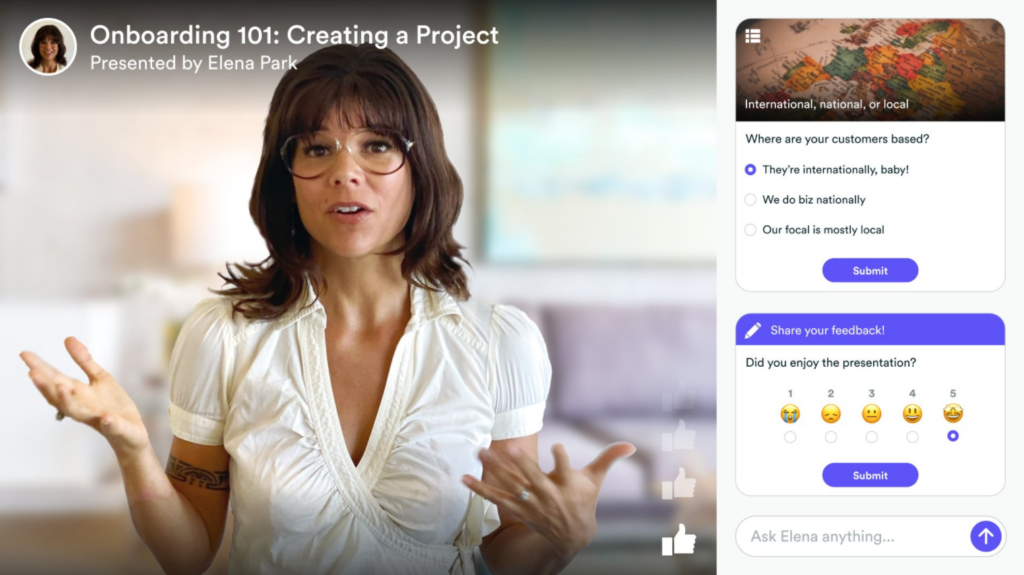
Evergreen webinars are pre-recorded webinars that are available round the clock without you needing to host them. This makes it super easy to sell your course on autopilot by automating this part of your sales funnel. And if you use the right evergreen webinar software, you don’t need to sacrifice interactivity or the ability to communicate directly with your prospects!
Here are a few of the key benefits of evergreen webinars over live webinars:
- Time saved: Evergreen webinars are pre-recorded, which means you can offer as many as necessary to reach as many prospects as possible without having to spend a single minute hosting any of them live.
- Increased attendance: People can join a session at a time that is convenient for them, regardless of the time zone. This includes joining a session right away, at a peak moment of interest. Offering a handful of convenient options to attend can significantly increase your webinar attendance rate,
- More interactive and engaging: Unlike live webinars where people tend to switch off, you can add preset interactions to evergreen webinars like polls, questions, links, and special offers to keep attendees engaged until the very end.
- Ability to close deals through chat: If you choose an automated webinar platform that notifies you of chat messages and allows you to jump into a live conversation with a prospect when you are able, you can use that opportunity to close deals in the moment and get people to sign up for your course.
While the strategies for promoting an evergreen webinar overlap quite a bit with the strategies for a live webinar, the approach itself is a bit different.
With a live webinar, there is always a big marketing push leading up to the event. Promotion is driven by the urgency inherent in a live event happening at a specific day and time.
With evergreen webinars, on the other hand, the key is to bake them into your long-term, ongoing marketing efforts, so that you are constantly sending new traffic to your landing page.
This means, for example, including your webinar:
- In email sequences triggered by other lead capture (like downloading an ebook)
- As a link below your email signature in all your correspondence
- As a standard module in every newsletter you send out
- In answers to questions on sites like Quora
- As your main CTA when you are a guest on someone’s podcast
For more ideas, read these 25 Ways to Promote An On-Demand, Evergreen Webinar.
If you’re interested in creating an evergreen webinar, here are our top 3 picks of evergreen webinar platforms you can use to make that happen:
eWebinar
Pricing: Starts at $99/mo, typically the package needed by course creators
Best Features: Most interactive; robust chat system, easy to use
eWebinar is our top choice when it comes to automating webinars. Features include live chat, personalized welcome messages, a wide variety of interactions like polls and questions, special offers and downloads, contact forms, and attendee reactions. You can even schedule just-in-time webinars for audiences in every time zone. What’s more, eWebinar lets you embed automated webinars inside Thinkific courses so you can use them as part of your course, not just for sales. In fact, it is the only automated software available in the Thinkific App Store!
Zoom
Cost: $400 to $64,900 per year per license depending on package
Best Feature: On-demand videos that remain available after recording a live webinar
Zoom lets you record your live webinars and then make them available afterward for people to register for and view as a replay. This makes it so you can continue to generate leads from a single event instead of hosting the same webinar over and over.
GoToWebinar
Pricing: Starts at $104/mo
Best Feature: Ability to repurpose recordings into automated webinar sessions (limited)
GoToWebinar is a live-first webinar solution with some automation features. Their Simulated Live option lets you quickly upload a video, schedule it as automated sessions in the future, and customize as needed.
And that’s a wrap! We hope these tips for promoting both live and evergreen webinars will help get your sales webinars out there and cause your online course conversion rates to skyrocket. Happy webinar hosting!


